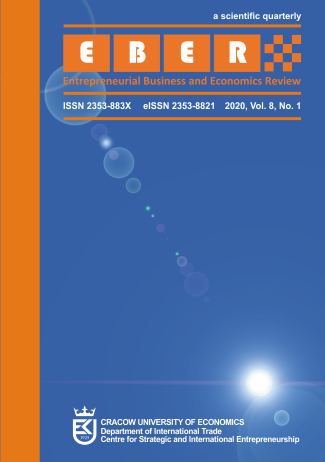Sculpting Factors of Entrepreneurship among University Students in Indonesia

Abstract
Objective: The objective of this article is to investigate students as a young generation and their intention to start their own business by analysing the internal and external factors of entrepreneurial intentions in Indonesia.
Research Design & Methods: The research sample included 652 undergraduate students spread across universities on the five largest islands in Indonesia collected using an online survey form sent using email and group chat. The collected data was analysed by using partial least square-structural equation modelling (PLS-SEM) to investigate the proposed hypotheses in the model.
Findings: The results indicated that from the structural model, we confirmed that entrepreneurial self-efficacy shows non-significant results on entrepreneurial intention. However, the most considerable effect of the supporting condition demonstrated better results on entrepreneurial self-efficacy rather than on behavioural control.
Implications & Recommendations: The non-significance effect of entrepreneurial self-efficacy on entrepreneurial intention indicated that having sufficient knowledge regarding entrepreneurship is not enough without the confidence to apply it.
Contribution & Value Added: From the empirical evidence, this research has two implications for educators: it is crucial to improve student creativity and to increase the role of external stakeholders to develop entrepreneurial spirit among the students.
Keywords
supporting condition, entrepreneurial self-efficacy, perceived behavioral control, entrepreneurial intention
Author Biography
Zakky Zamrudi
Asistant Professor in Department of Management Studies, author of publication on information systems, technology acceptance, technology innovation for business, editors in national journal ‘At-Tadbir: jurnal ilmiah manajemen’, reviewers in information and technology journal ‘’
Correspondence to: Zakky Zamrudi, Islamic University of Kalimantan, Jl. Adhyaksa No. 2 Kayutangi, Banjarmasin, Indonesia, email: zakky@uniska-bjm.ac.id / jzakky@gmail.com
Farida Yulianti
Associate Professor in Department of Management Studies, Dean of Faculty of Economics, authors of publication on marketing studies, buying behaviour, youngsters behavioral intention.
Correspondence to: Farida Yulianti, Islamic University of Kalimantan, Jl. Adhyaksa No. 2 Kayutangi, Banjarmasin, Indonesia, email: farida.yulianty@yahoo.com
